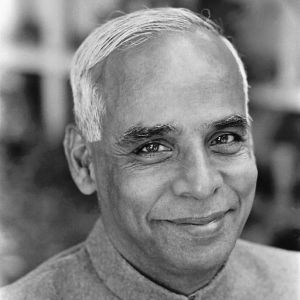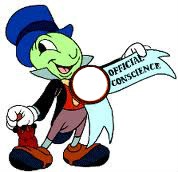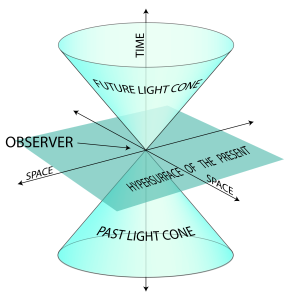I present here, briefly, a particular vision of reality that lately has been very useful to me to broaden my understanding of what is happening around us and also within us.
Conflicts in life are opposing forces
Why are there so many conflicts in life? Why so much evil? Why do diseases exist? Why do people die in senseless accidents? Life is apparently chaos, a sequence of good and bad events, which often hits us hard.
We can use the following conceptual framework: life unfolds at various levels, from the physical level, through the biological, up to the higher mental, social and spiritual levels. Everything in existence works due to forces that act at these levels.At the basic physical level we have the forces of Nature such as gravity or electricity, at the biological level there are other forces of a biochemical nature but there are also forces that tend to evolve. and to conserve species, and this conservation includes the forces that lead to the struggle for survival, to kill to feed, to die to make way for new, more evolved generations.
At these basic levels there is no conflict because there is no mind that interprets it this way, the forces simply operate each at their own level doing what they have to do to keep their own scenario working. Thus, an electrical storm, which is actually a return to the electrical balance of the atmosphere that had been unbalanced, forming large amounts of electrical charge in a limited region, causes a natural fire in a forest, killing thousands of animals and plants; there is nothing intrinsically wrong with it, what happens is some forces, the physical ones, act against others, the biological ones.
This is a constant: in Reality a multitude of forces operate, and they inevitably collide with each other often, each force operating at its own level. Whenever the forces of reality collide, there is destruction of something, there is a force that temporarily gives way.
At higher levels the same thing happens, and also suffering appears, which is the awareness of being undergoing destructive forces. On the mental level the mind strives to create safe environments for the individual, with partial success, for it is impossible for it to avoid all conflicts between forces at various levels. The mind thus creates homes, creates comforts, creates sources of food to escape famines, creates medicines to alleviate diseases that are nothing more than conflicts between biological forces, but at the same time that mind suffers fear of not achieving security, and creates new conflicts with other minds for ideological reasons, that is, mental forces also collide with each other on their own level. Shocks at the mental level can have serious consequences, even generating wars that completely destroy the security that the mind craved (!).
At the social level, there are forces tending to organize the collective welfare. In this sense, forces arise that see violence, normal on the biological plane and even on the basic mental level as a means of defense, as something undesirable. Organized justice, solidarity, the welfare society arises. Of course, there are still conflicts because the concrete forms of organization, that is, the political ones, can collide with each other and collide with each other, and not always generate constructive debates, often these political currents seek hegemony and absolute power, thus seeking to weaken or destroy the rest of the options.
Thus, the individual finds himself living in a reality made up of very different forces, operating at different levels, which often collide with each other causing some type of destruction, which is experienced as bad, generating suffering to a greater or lesser extent, depending on how much destruction it generates for the individual and their immediate environment.
Spirituality amb Energy Level
We are left with the highest level of Reality, the spiritual, in which consciousness transcends the mental level, non-duality is experienced, union with everything manifested, equanimous understanding of the reality that unfolds moment by moment around us, and one is aware of a deeper, more consistent individuality than that represented by the psychological personality. In the conceptual framework that we are presenting there is a fundamental difference between this level and the rest: on the spiritual level we consider that forces do not operate but energies.
Energy is a potential force, not manifested. Forces emerge from energies, which are its cause. In other words, the spiritual level can put us in contact with the causes, transcending the effects of those causes. At the physical level it is a known fact: the force that moves a railway locotomora, for example, comes from an electrical energy that is circulating through the electrical network but that does not produce any effect if the means are not given to make it manifest. As the lightning that arises from between the clouds comes from an electrostatic energy, potential, that was there in space, until it manifests as a visible discharge … and dangerous. On a spiritual level, life is a power that “pushes” the lower levels to manifest themselves through the multiple forces that make up life.
Love is another spiritual energy that manifests itself in multiple forms of forces: desire, affection, friendship, but also attachment to ideas, opinions and ideologies. The forces of love like all forces can conflict with each other and with other forces, the desire to love another can imprison, bind that someone, the love of an ideology can create conflicts with others in love with other ideologies, etc. But Love as a primordial energy does not conflict with anything. We can also say that energies simply ARE, while forces do things. The BEING is also, it does nothing, it is an energy of unmanifest individuality. The personality with its biological, mental and social forces is a manifestation of the Self.
When we become aware of that level of primordial, spiritual energies, everything makes sense, we no longer see existence as a chaos of meaningless forces, on the contrary, we understand that these forces build reality and that it is inevitable that they collide often. We are aware of the energies of Life, Love and Being, which are the source of everything manifested, and we realize that in that deep vision of reality that unfolds moment by moment, everything is correct, everything is well, and there is no place for suffering.

 I write this article not to regret about the human condition, which would be a useless act, but to try to put some light on some issues;
I write this article not to regret about the human condition, which would be a useless act, but to try to put some light on some issues; Human beings also need simple principles of a higher level than we can think of, principles that we should not forget, on the contrary, we should continually review our actions and thoughts to verify that we are not losing ourselves in the shadow ship of our mind
Human beings also need simple principles of a higher level than we can think of, principles that we should not forget, on the contrary, we should continually review our actions and thoughts to verify that we are not losing ourselves in the shadow ship of our mind 
